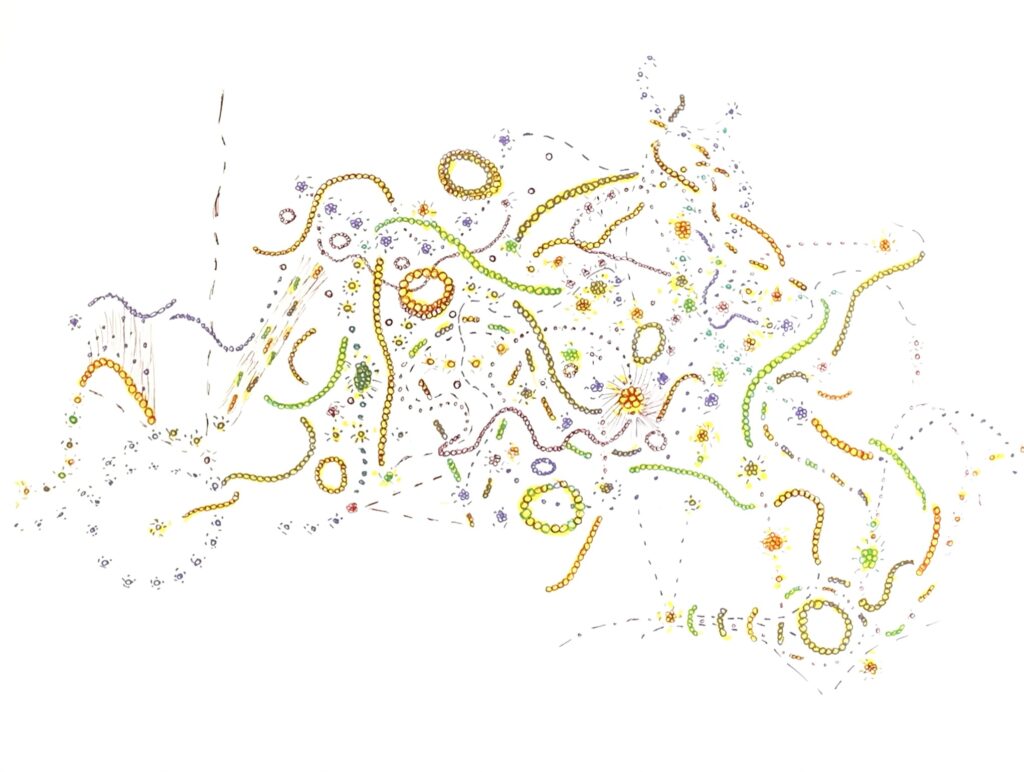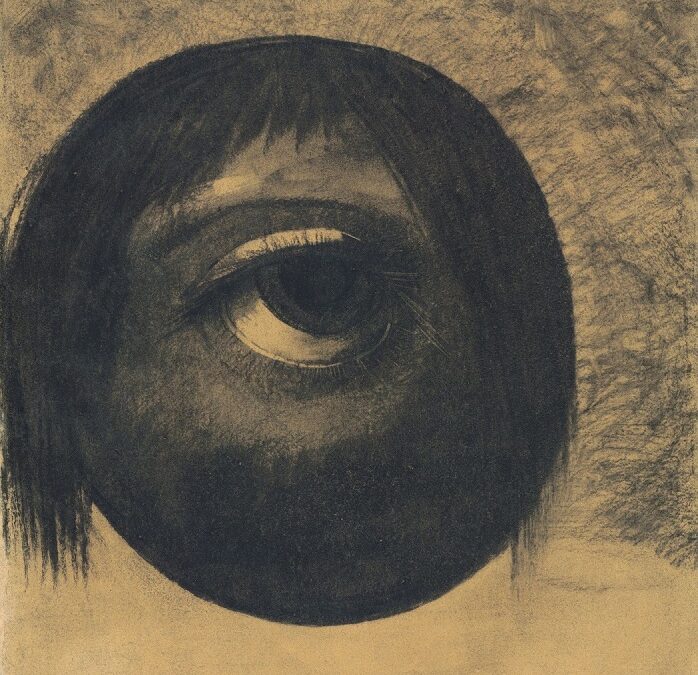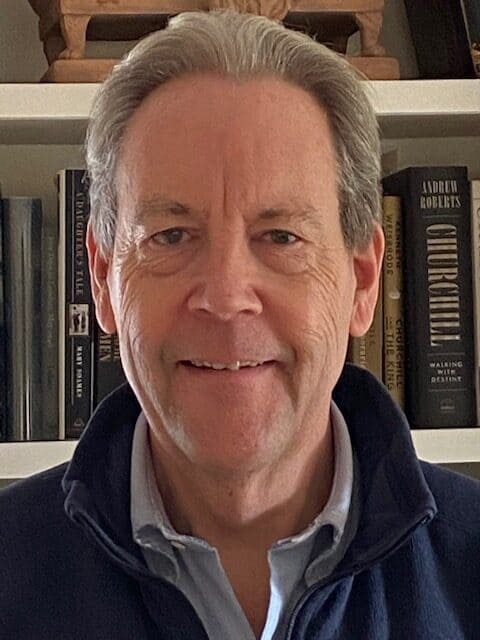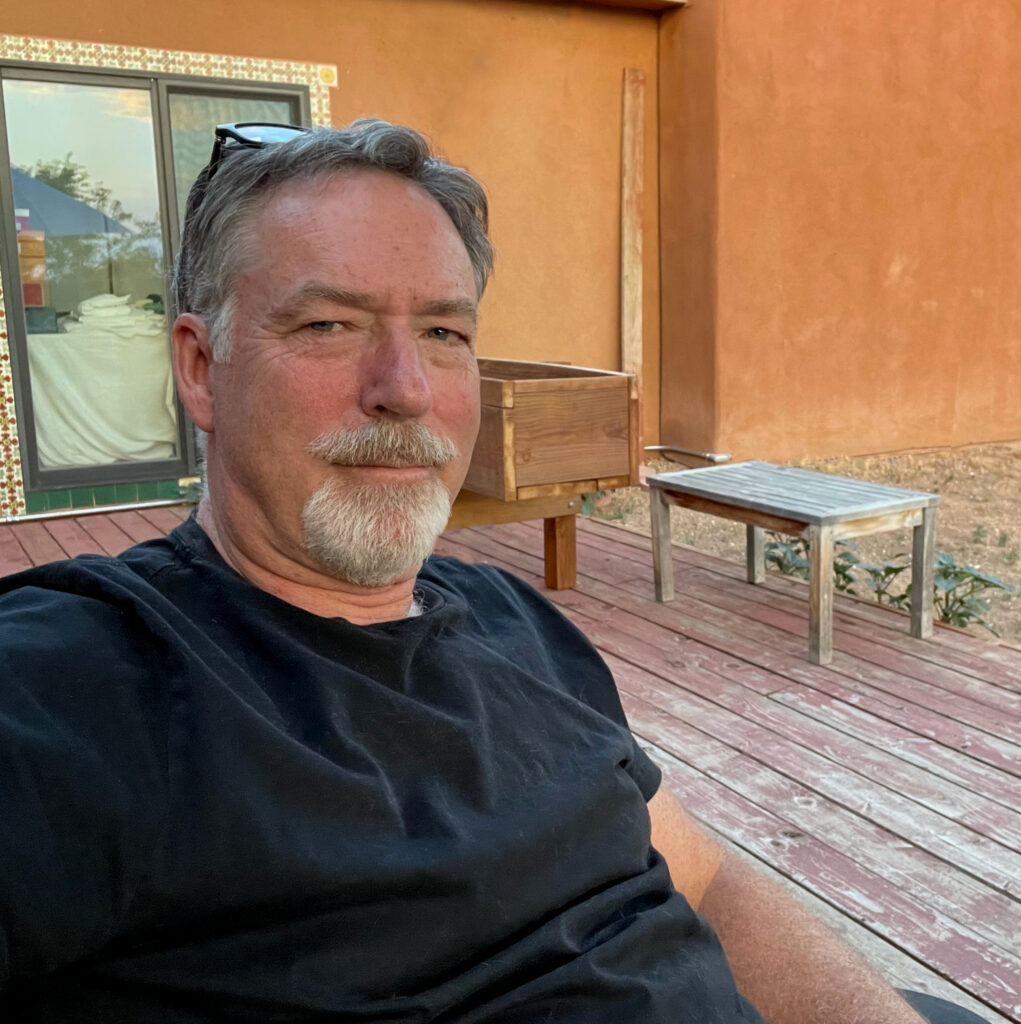I opened up an intriguing cauldron of worms when I asked a bevy of art writers (call them critics, journalists, or simply reviewers) on what it means to have an “eye.” Why did they consider their judgments superior to those of the average museumgoer or art lover? The catalyst was my ill-considered reaction on Facebook to a painting by and a photograph of Amy Sherald in Vanity Fair (see Part One for the whole story, which proved impetus for critic/artist Franklin Einspruch to initiate an hour-plus discussion on the smartphone app Clubhouse).
The range of answers is astonishingly varied and thoughtful, from Laurie Fendrich’s citation of the 18th-century philosopher David Hume to David S. Rubin’s recollections of a course in art history to the assertions of Edith Newhall and Christopher Benson that practicing art is a huge boon in judging art.
What was not touched on in this discussion, perhaps because it’s tangential to it, is the quality of writing that undergirds the professional’s judgment. I’m a great fan of clarity and the well-turned metaphor that might bring about new ways of seeing, and so I can get especially irate, say, when Peter Schjeldahl of The New Yorker decides to throw in eight or nine words I’ve never seen before in my life and thus sends me scurrying to the dictionary. Or when Dave Hickey goes off the rails in a sentence like this: “Today, for some reason, we remain content to slither through this flatland of Baudelairean modernity, trapped like cocker spaniels in the eternal, positive presentness of a terrain so visually impoverished that we cannot even lie to any effect in its language of images….” (See my earlier Vasari21 post on the subject, Blather and Bloat).
But that’s probably a topic for another day. Herewith, for the nonce, are some ruminations on that vexed critical apparatus known as “the eye.”
Eric Gibson: If there’s anything to be learned from the example of Amazon.com and other commercial websites, it’s that everyone has the right to pass judgment and submit reviews. But what makes a good art critic is the accumulated knowledge and experience, the depth and originality of insight, that he or she brings to the process. The analogy I would use is this: If you’re not feeling well, would you rather see a doctor who’s been to medical school, or someone who regularly surfs WebMD?
No critic claims omniscience. Instead, to paraphrase Clement Greenberg, a critic is someone who is regularly educating himself in public. You’re always asking yourself, What is this artist doing? Why is this work better than that one? That’s what separates the critic from the layperson. It’s this act of self-education and improvement.
As an example, back in the 1980s, when the Whitney had a Donald Judd retrospective, I reviewed it for The New Criterion and afterwards realized I was baffled by the work; I was using the templates of Minimalism and impersonality to understand his approach, and I realized I hadn’t arrived at my own place vis à vis his aesthetic and his achievements. I knew that I’d be writing about him again in the future, and so I made it a point to study every Judd I came across in a museum or gallery. By the time of the recent retrospective at the Museum of Modern Art, two huge anthologies of writings and interviews had come out, and so I just sat down and read them cover to cover. One of his signature refrains, repeated throughout the two volumes, was denying that he was a sculptor or that the work he produced was sculpture, and this used to drive all the critics and interviewers crazy. But when I walked into MoMA’s galleries and saw all the early work in the first room, all of it painted a pulsing acid red, I had this flash: You know, he’s right, He’s not a sculptor. He’s a painter. And that was my starting point for a subsequent review. But it took a certain amount of looking and study to arrive at that conclusion. And that’s what critics do: It’s a continual process of self-education and self-questioning.
Edith Newhall: To me, “having an eye” immediately brings to mind art dealers and collectors of an earlier time—say, from the late 19th-century to before the 1990s. They were risk takers, brilliant promoters, and some of them were both gallery owners and artists, such as Betty Parsons. I doubt many younger collectors have the old-fashioned “eye” that their predecessors had and believe that the buying is more investment oriented.
That said, artists probably have the best eyes. The art critics I’ve known are generally more analytical and I actually think very few of them have the “eye,” except for a few who are/were artists. And I don’t think it’s something they would cultivate.
I’m thinking the average museumgoer might have a more open approach to new art than I do. I’m drawn to work that fits into a continuum of art I’ve liked over the years and I recognize all the appropriators right away.
My writing about art has been enormously helped by having been an artist and knowing how things are made and by reading others’ art criticism for so many years.

A drawing by LA-based critic, curator, and artist David S. Rubin: Pearls of Wisdom (2021), color pens on Bristol vellum, 19 by 24 inches
David S. Rubin: I first heard the term “having an eye” when I was told that I have one by UCLA professor Donald F. McCallum. As an undergraduate, I was a philosophy major, but I took art history because it was fun. When a friend asked me to join her in taking McCallum’s Chinese art-history class, I said “Sure!” as I loved the slide comparison method of learning. Among the objects that we studied were ancient Shang and Chou bronzes. McCallum was a formalist and he taught us how Chinese art scholar Max Loehr had been able to date them based on stylistic evolution. On the midterm exam, McCallum projected a single slide of an unknown object. His exam question was, “You are the museum curator. Should the museum purchase this or not? Write a defense of your answer.” In an instant, I knew that the unknown was a fake, and for two significant reasons. First, the taotie mask on the vessel’s lid was right side up when it was supposed to be upside down. Second, and perhaps more importantly, I described the contours (which McCallum had referred to as “elastic”) as being “as rigid as a milk carton.” In other words, I noted that someone had merely incised the pattern on the surface without replicating its undulating style or understanding its meaning. In that I was the only student in a class of 150 or so who identified why the piece was a fake, McCallum read my answer and called me into his office. There he told me that I had “an eye,” and that is what set me on my career as an art historian, curator, and critic.
In addition to spotting details that are normally overlooked by others, I believe that having an eye is also related to empathy, something that another of my UCLA professors, Lester D. Longman, defined as “feeling like the thing that you are looking at.” I know that when I install an exhibition, I am not only observing the visual relationships among the objects, but I am feeling their weights as I move them about until I know that the room is in balance.
Laurie Fendrich: Asking what it means to have an “eye” means asking whether some people have better judgment about art than others. An enormous question, a difficult question, a rabbit-hole question—around in Western culture since the time of the ancient Greeks and Romans, but nowadays mostly dismissed out of hand. Arguing that one person’s judgment about art is better than another’s is considered elitist, and elitists have no place in an egalitarian age. It’s far better simply to embrace the old Roman adage, “de gustibus non est disputandum” (matters of taste aren’t subject to dispute) than to get dragged down into unwinnable arguments about the relative merits of people’s subjective judgments about art.
Yet the fact that judgment or taste in art is subjective is, at the same time, a terribly inadequate explanation of what’s going on in looking at and judging art. Or to paraphrase David Hume in his brilliant 1757 essay, “Of the Standard of Taste,” the old adage has some mighty big holes in it. For starters, not everyone has equal visual abilities. We don’t have equally strong eyesight, or equal ability to see color or distinguish among the relative values of darker and lighter hues. And just as some people are tone deaf or suffer from anosmia, some people are color blind. No one in their right mind would argue that someone with any of these constraints would make a good judge of art.
There are also other important differences among us. Our habits of perception, for example, are molded by such things as our health, gender identity, race and ethnicity, technology, religion, education in general, education in the visual arts in particular, and even climate—all which vary enormously over time, from culture to culture, and from individual to individual. With so many standards of aesthetic taste—so many “eyes” looking at and judging art—who’s to say who’s got “an eye”?
In the end, despite problems with Hume’s essay, I take my cue from him. As Hume declares, it’s true we can never be objective in matters of art and must live with the impossibility of defining, or being certain, about what’s a “good eye.” But that’s not the whole story. Not being objectively able to prove what’s aesthetically bad, good or best doesn’t imply there’s no such thing as good and bad art. The merits of judgments about art are there, but they depend a whole lot on who’s doing the judging. The best judges of art are those who, for starters, work with unimpaired vision. Their perception, especially of the smallest details, is acute, and they possess a long history of looking at and thinking about art. In other words, while judgments in art are subjective, they’re nestled into the structure of physical judge’s bodies and their perception-based, rational explanations for why something is good or bad.
In Western art, the modern notion that there are universal visual truths about beauty permeating all cultures (lurking in such things as shape, color, form, composition and all the rest) has gone almost entirely out of fashion. Yet there remain true believers. Dave Hickey, for example, argues something of this sort about music—that if a Westerner speaking no Chinese were to watch five Chinese operas, something about the opera form itself would come through and he or she would be able to distinguish which are the best two.
While no one can prove who has or doesn’t have “an eye,” if one looks at the judge, the evidence is always in plain sight. As Eddie Izzard says about guns, guns don’t kill people, but they sure do help. Experience in looking at art and acute perceptual abilities don’t make someone a good judge of art, but they sure do help.
Christopher Benson: The “fine arts”—once mainly limited to painting and sculpture—today comprise an array of art objects, actions and methods, both handmade and mechanical, that would have been unrecognizable as such to our grandparents. Almost any practice executed with care and skill (as well as a great many things that are not at all skillfully conceived or made) are now comfortably accepted by the public as “important” works of ART. In this anything-goes atmosphere, critique—a discipline inextricably bound to traditions of educated discernment and connoisseurship—is becoming increasingly irrelevant, if not condemned outright as an emblem of the art historical canon of old, dead white men. “It’s art ‘cause I say it is” could be the motto of a self-credentialing ethos now establishing itself across a wide range of so-called “creatives,” from the YouTube influencer, to the makers of today’s NFTs. How any carefully honed instrument of critical judgment could be meaningfully deployed in such a fluid atmosphere rather begs the question of its ongoing relevance.
But then, critique was ever a subjective enterprise masquerading as a hard science. There are very few serious professional disciplines that would accept the judgment of non-practitioners. Expertise is, by definition, a reflection of direct experience, and peer review is the rightfully expected standard in fields as diverse as the law, medicine, economics and physics. Even professional athletes are generally assessed for the public’s edification by former athletes. The scholarly mythos of critics’ knowledge of art therefore deftly obscures the reality that the only topics on which they are legitimately authoritative are the content and relative importance of theirs, and their colleagues’ opinions.
This is not to say that works of art can have no objectively measurable quality, or that there are not good or bad examples of their kind which can be critically assessed as such. But in order to have any plausible accuracy, all such assessments should relate to that kind, and be sharply qualified by a deep and direct knowledge of it. As the economist/philosopher E.F. Schumacher wrote in A Guide for the Perplexed:
“What enables man to know anything at all about the world . . .? Nothing can be known without there being an appropriate ‘instrument’ in the makeup of the knower. This is the Great Truth of ‘adaequatio’ (adequateness), which defines knowledge as adaequatio rei et intellectus — the understanding of the knower must be adequate to the thing to be known.”
It is a rarely acknowledged truth that no one is as comprehensively adequate to the understanding of any kind of art as the people who actually make that kind of art themselves. Outside that direct experience of making, the next best way to know art’s real quality is not to seek an expert’s opinion about it, but to become an expert oneself. Yes, critics can do us a great service by teaching us how to appreciate art, but it is a grave mistake to believe that they can appreciate it for us.
I passionately believe in the importance of the critical faculty itself, but have little interest in the critical profession. Like most artists, the experts whose opinions I value most highly are my fellow practitioners. And while I can, and certainly do, enjoy the analysis of the most thoughtful, nonpractitioner writers on art, I do so with a clear understanding that they are ultimately amateurs. Perhaps that sounds like an insult, but it is meant in a good way: the amateur—from the Latin amator, meaning a lover—is a person who studies a subject from the springboard of a genuine affection for it, as opposed to doing it either for a fee or for some other form of self-advancement. Despite its near universal contemporary monetization, the experience of art remains a profoundly direct, personal and noncommercial phenomenon. Anyone seeking the stuff out with a sincere hunger to know just what the hell it’s all about should therefore train themselves to be no less astute, educated and insightful a connoisseur—no less a real amateur—than the most erudite critic. Without that internal adequateness, all we will ever see are the dim reflections emanating from the opinions of others.
Top: Odilon Redon, The Eye (Vision), 1881, drawing, 16.5 by 14.5 inches




David, thank you for these articles. Please do parts 3 and 4 and 5, etc. It has alwauys been difficult for artists to find critics who are sufficiently knowedgeable and willing to put their opinions about artworks into words. Biases aside, getting an honest Greenbergian “take”on an artwork, from a critic or colleague, is invaluable.
Um, David? Ann Landi is the editor of this site. But thanks for your note of appreciation.